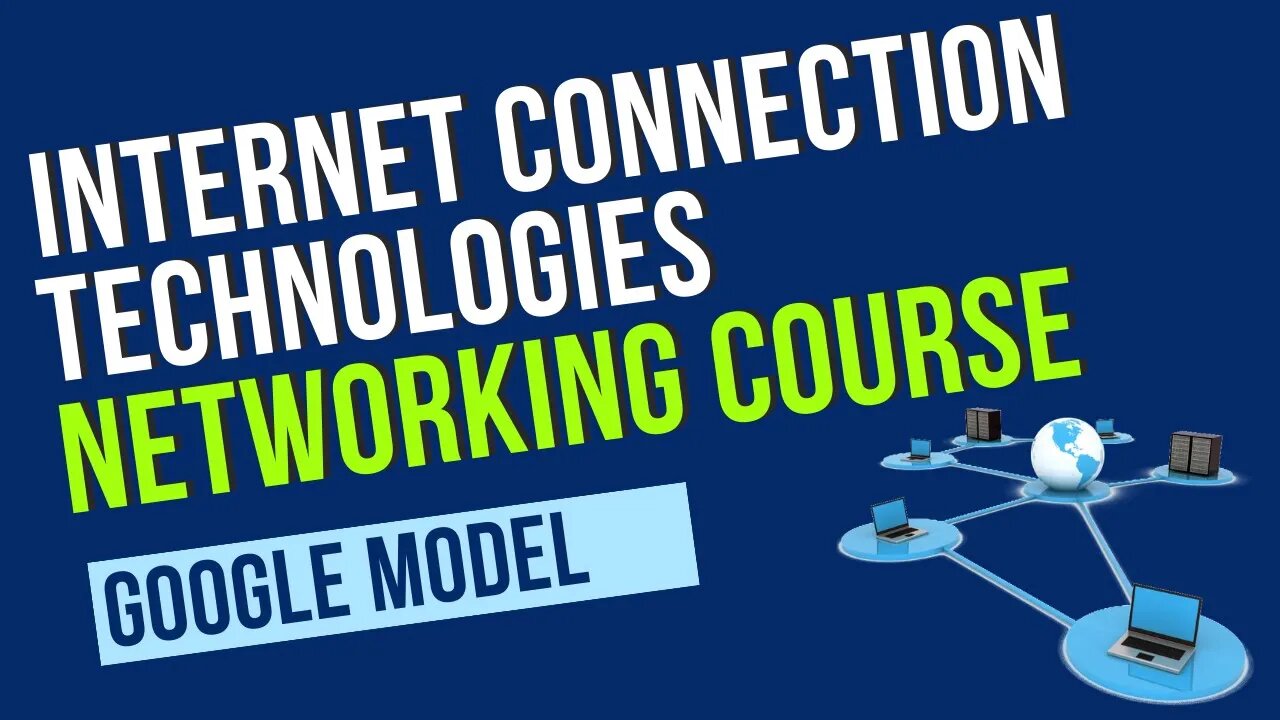Premium Only Content

Internet Connection Technologies Part 50
Internet Connection Technologies
There are various internet connection technologies available today, each with its own characteristics, speed capabilities, and deployment methods. Here are some commonly used internet connection technologies:
Dial-up: Dial-up is an older technology that uses a telephone line to establish a connection to the internet. It operates over a voice frequency and is relatively slow compared to modern broadband technologies. Dial-up connections are typically limited to a maximum speed of 56 Kbps and are not commonly used anymore.
DSL (Digital Subscriber Line): DSL is a popular broadband technology that uses existing copper telephone lines to transmit data. It provides faster speeds compared to dial-up and offers both asymmetric (ADSL) and symmetric (SDSL) variants. DSL speeds can range from a few Mbps to tens or hundreds of Mbps, depending on the distance from the DSLAM (Digital Subscriber Line Access Multiplexer) and the quality of the copper lines.
Cable Internet: Cable internet utilizes coaxial cable TV infrastructure to deliver high-speed internet access. It offers faster speeds compared to DSL and is commonly available in urban and suburban areas. Cable internet speeds can range from a few Mbps to several hundred Mbps, with some providers even offering gigabit speeds.
Fiber Optic: Fiber optic technology provides the fastest and most reliable internet connections available today. It uses thin strands of glass or plastic (fiber optic cables) to transmit data as pulses of light. Fiber optic connections can deliver incredibly high speeds, ranging from hundreds of Mbps to multiple gigabits per second (Gbps). Fiber-optic internet is commonly deployed as FTTH (Fiber to the Home) or FTTB (Fiber to the Building), providing ultra-fast and symmetrical upload and download speeds.
Satellite Internet: Satellite internet connects users to the internet via geostationary satellites. It is primarily used in rural or remote areas where traditional wired connections are not feasible. Satellite internet offers wider coverage but can have higher latency and limited bandwidth compared to terrestrial technologies. Speeds can vary but are typically in the range of a few Mbps.
Fixed Wireless: Fixed wireless technology delivers internet connectivity using wireless radio signals between a base station and a subscriber's location. It can provide internet access in areas where wired connections are challenging to deploy. Fixed wireless speeds can vary but can offer decent speeds ranging from a few Mbps to several hundred Mbps, depending on the technology and infrastructure.
These are some of the main internet connection technologies available today. The availability and specific speeds may vary depending on geographical location, infrastructure, and service providers in a particular area.
-
 47:17
47:17
Kimberly Guilfoyle
13 hours agoWoke Gets DOGE’d, Live with AJ Rice & Jarrett Stepman | Ep. 197
129K43 -
 20:11
20:11
Candace Show Podcast
11 hours agoBecoming Brigitte: Candace Owens x Xavier Poussard | Ep 6
193K330 -
 8:25:38
8:25:38
Dr Disrespect
16 hours ago🔴LIVE - DR DISRESPECT - ELDEN RING DLC - REVENGE
194K22 -
 54:22
54:22
LFA TV
1 day agoThe End of the Trans-Atlantic Alliance | TRUMPET DAILY 2.17.25 7PM
50.2K7 -
 55:56
55:56
BIG NEM
15 hours agoUGLY COCO: The Rapper Who’s Tried EVERY PSYCHEDELIC 🌌
22.6K1 -
 1:42:51
1:42:51
2 MIKES LIVE
12 hours ago2 MIKES LIVE #181 Deep Dive Monday!
26.8K3 -
 1:57:43
1:57:43
Quite Frankly
13 hours ago"Low Tide at The Pier: Munich Tears" 2/17/25
38.5K19 -
 27:44
27:44
The Based Mother
14 hours ago $0.80 earnedBOOK BAN LIES. Karen England and the MSM fairy tale that books are being “banned” by fascists
18.8K3 -
 1:01:52
1:01:52
In The Litter Box w/ Jewels & Catturd
1 day agoBest Presidents' Day Ever! | In the Litter Box w/ Jewels & Catturd – Ep. 743 – 2/17/2025
113K68 -
 1:29:15
1:29:15
Simply Bitcoin
16 hours ago $10.31 earnedThey JUST Triggered A Global Gold Rush: $1M Bitcoin is coming! | EP 1184
97.2K32